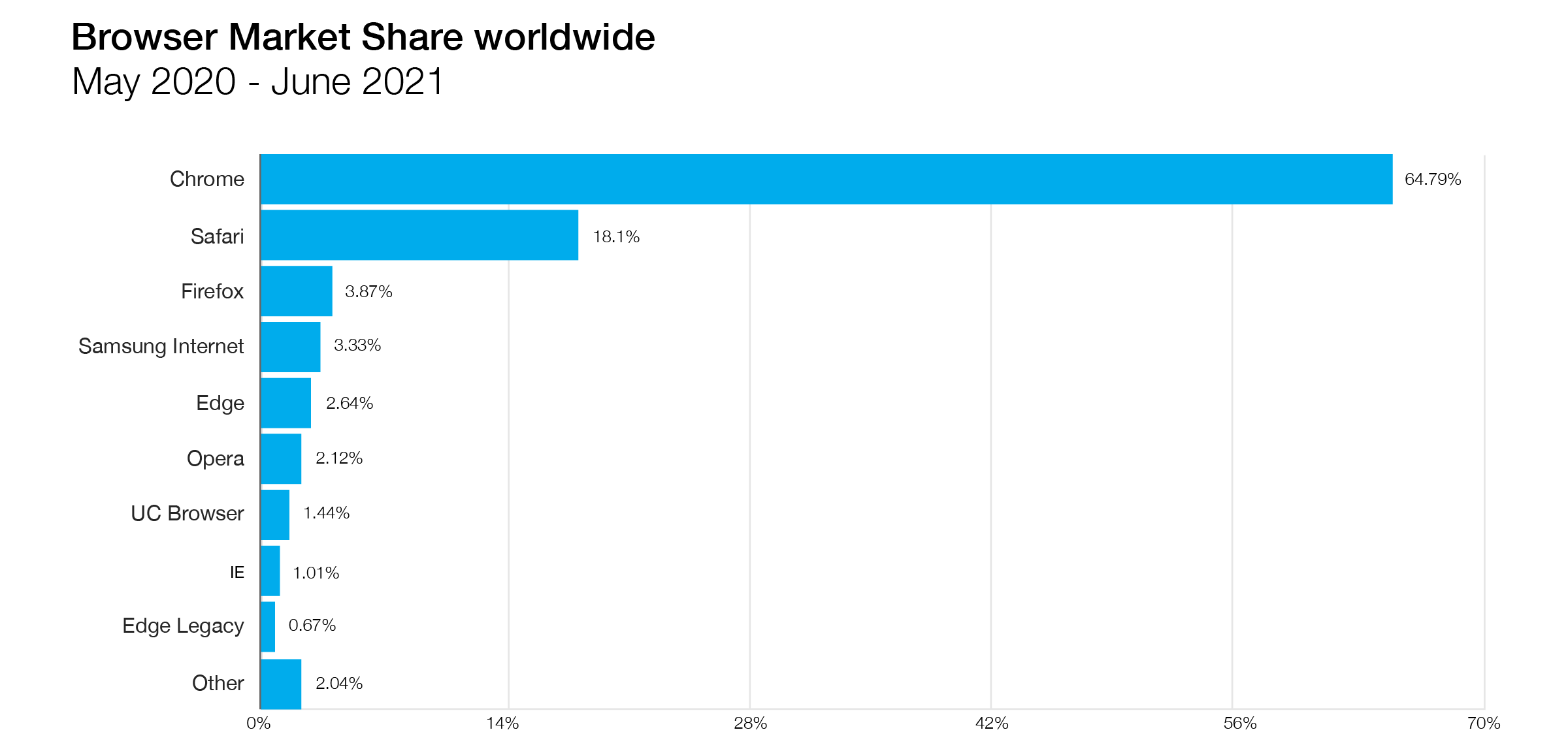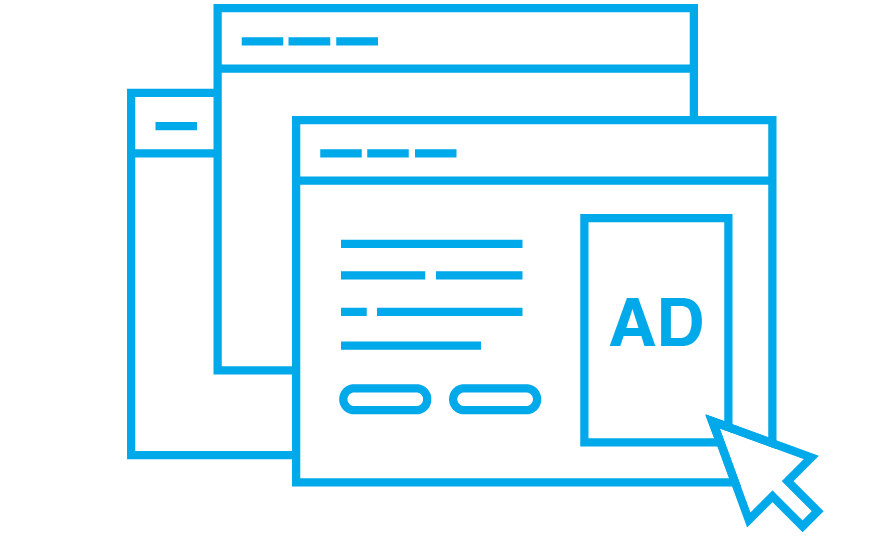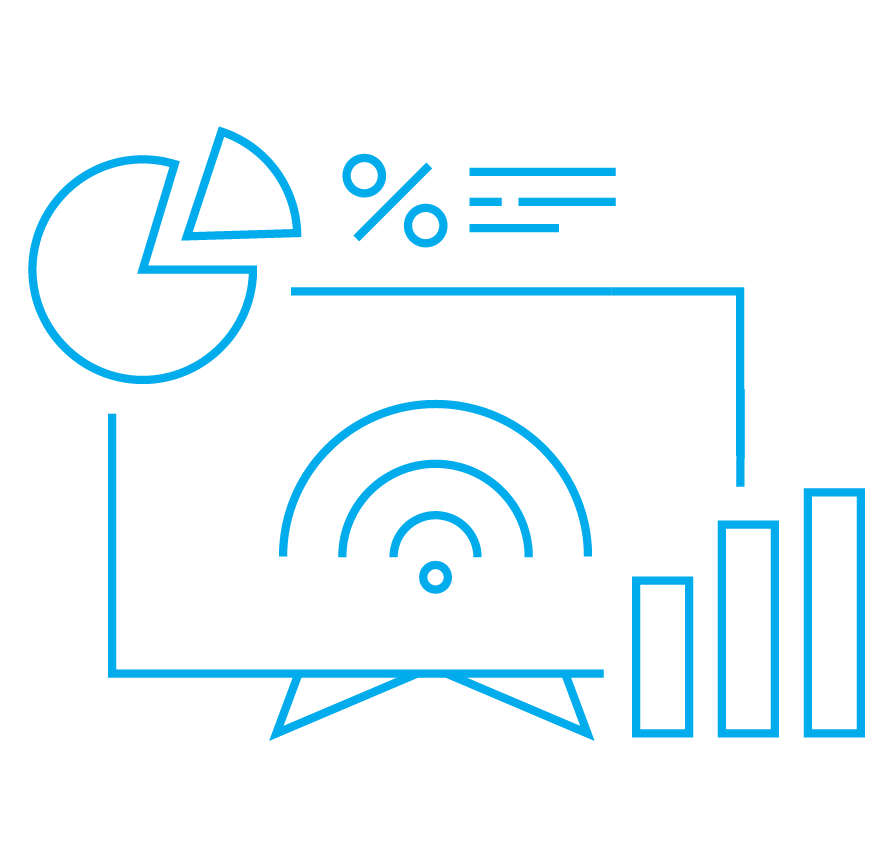- What is a cookie?
- How targeting through 3rd party cookies works in programmatic advertising?
- What are the main advantages of 3rd party cookies?
- What advertisers are going to do in the post cookies reality?
- What does the post third party cookie era mean for the advertisers?
Cookies initially lost their support from Safari and Firefox in 2017, now it’s time for Google Chrome. The plan was to ultimately block the possibility of tracking users between sites via cookies within 2022 but it has changed. The tech giant postponed erasing cookies until 2024.
According to the latest market share data published by StatCounter, Google Chrome is a browser that has around 65.25% of all platforms browser market share which makes it one of the biggest browsers that attracts the majority of the users online.

Therefore, Googles’ decision started to be considered by European Union as anticompetitive behavior which may result in investigation into Google advertising practices. As a result of recent events in the advertising industry, advertisers will be forced to implement innovative methods of establishing users’ identity. What is post-cookies reality going to look like? It seems that some ingenious alternatives have been already created.
What is a cookie?
A cookie is a small piece of data saved on your device after you visit a new website. This type of file gathers the data about visited websites and about your online behavior. Cookie files are used in digital marketing to profile users and target them with personalized ads.
How targeting through 3rd party cookies works in programmatic advertising?
There are multiple types of cookies – 1st, 2nd and 3rd party cookies. The last mentioned are commonly used by data providers – they deliver segmented data for targeting programmatic campaigns. Data providers collect data from various sources, such as publishers, research companies or mobile apps, next they segment data into groups and finally distribute those target groups through selling platforms, such as DSPs.
There are two main ways to create cookies. First one, is to create them through server-side by calling a third-party server. The second is through front-end-side, using Javascript or other scripting language.
For example when a website adds an AdTech platform’s code to their web page and each time it is loaded, requests are being sent to that platform’s servers which creates a third party cookie.
As a result they are able to provide information about users’ interests or intentions based on their online behavior and visited websites. That gives the AdTech environment the ability to show personalized ads for the particular group of people.
What are the main advantages of 3rd party cookies?
The main advantage of third party cookies in programmatic is that they track what users were browsing in the entire web, which is opposite to the role of 1st party cookies that provide information from the only one domain by which they’ve been created. Of course it is important to note that information about users can be only provided through a specific browser that’s been used.
However, more and more browsers decided to block 3rd party cookies, due to privacy concerns. Safari and Firefox did that in 2017 and Google Chrome is next in line. Tech giant announced that it will disable third party cookies along with 2024. This change in privacy policy is mainly caused by users’ growing distrust of collecting their online activity data. More and more people are demanding greater privacy and increased control over their data that is used.
What advertisers are going to do in the post cookies reality?
Moving on, the advertising industry needs to figure out new alternatives for efficient targeting without third party cookies. In order to create a successful targeting, there need to be discovered alternatives which:
- work across all digital channels
- provide the consumer with greater control
- better explain its value to consumer
It looks like companies have already figured that out, creating interesting alternatives for targeting without third party cookies. Let’s take a look at the most popular IDs solutions as a 3rd party cookies alternatives:
Unified ID 2.0
Originally developed by The Trade Desk, it is considered as an upgraded version of cookies. It uses consumer’s anonymized email addresses which are gathered after users log into a website or app independently of a tech provider (mobile, connected TV).
For example, when a consumer logs into a website, using an email address, an identifier is created based on an anonymized version of that email. At the time users log in, they get to see why the industry wants to create this identifier. This is a privacy focused alternative, due to the possibility of opting out by consumers and deciding about how their data is shared.
LiveRamp Identity Link
LiveRamp came up with an identity solution known as IdentityLink which is responsible for matching hundreds of identifiers used by consumers on different types of devices or marketing platforms to a real person. The main advantage of this solution is that each stage of the matching process is compliant with privacy policy.
ID5
This technology enables users’ identification without relying on third-party cookies. The tool provides an encrypted user ID which replaces cookies. The tool brings profits for publishers, advertisers and as well as for users. It focuses on sharing 1-st party user IDs, which is more compliant with GDPR and ensures consumers that their data is safe.
Panorama ID
Lotame developed an ID solution for the open-web. It is based on graph technology, which connects all types of device identifiers such as CTV, desktop, mobile, customer-specific ID’s and attached online behaviours.
But that’s not all of them. There are many more ID replacements that enable targeting without third-party cookies: Nielsen Identity Sync, AdmixerID, Zeotap ID+ and many more.
It’s hard to say what type of alternative advertisers are going to choose from. Possibly, the advertising market will implement one alternative suitable for each type of industry or perhaps they will experiment with many solutions combining them with each other.
What does the post third party cookie era mean for the advertisers?
So, what will exactly the post third party cookie era look like? It’s hard to predict the particular scenario. The best for marketers is to start experimenting with new solutions before 3rd party cookies are blocked. New alternatives are being made till that day and they are not only based on identifiers. Besides looking for ID replacements, marketers will also have to focus more on using first-party data.
Another solution that is worth considering is fingerprinting, which is focused on combining certain attributes of a device such as operating system, device IP’s address or language setting.
Device fingerprinting relies on the probability that a recognized device with specific attributes will be the same one next time. Additionally they will have to adapt a new approach by looking for different ways of reaching their audience.
The other option that it’s on the way is Federated Learning of Cohorts (FLoC) developed by Google. However, the tech giant hasn’t given any specific insights, yet. In order to better develop new technology, Google decided to postpone erasing cookies until 2024.

Due to upcoming changes, the future of the advertising industry may look interesting. However it doesn’t have to necessarily mean global changes. Constant technological transformation is a part of the marketing profession.
As a result, most of the marketers got used to the continuous need of modification of their strategy. In that case, the advertising industry may consider blocking third party cookies as the new beginning of technological development.
At that moment it’s hard to predict how post cookies reality will look like in the future and what influence on those changes will Google have. For sure, publishers are constantly working on new targeting solutions that will provide safety and data privacy.
What is also meaningful for marketers is to come up with a new replacement that will be as efficient as cookies. For sure the biggest challenge that marketers will have to face is to choose the most suitable channels and platforms for their industry. What’s even more important is that they will have to prove users’ that sharing data can be safe and valuable.
What makes personalized advertising even harder to abandon is that the programmatic market will rapidly grow during upcoming years and digital advertising overtook traditional ad spending last year. Zenith forecasting proves that personalized advertising has high efficiency which means the need of coming up with new solutions of targeting without third party cookies.



